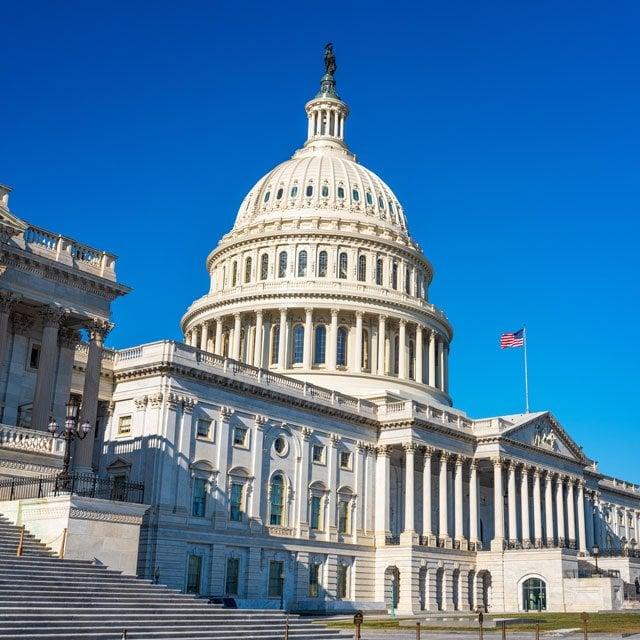The Swedish government’s plan to increase the annual budget allocation for research and development (R&D) by SEK6.5 billion (US$634 million) by 2028 – the largest increase yet, according to the Ministry of Education and Research – has been welcomed by the academic community.
While still among the top five most R&D intensive countries in the OECD area when it comes to R&D expenditure as a share of GDP in 2023, Sweden has been losing its position over the years, falling from third to fifth place after being passed by the United States and Belgium, according to Statistics Sweden.
Nonetheless, the increase in Sweden goes against the trend of neighbouring European countries such as the Netherlands, where the government has announced cuts to research, and in Norway where the Minister of Research and Higher Education Oddmund Hoel has suggested that budget cuts and layoffs at universities are the new reality.
The increase also comes against the backdrop of a national recession.
In a statement in August, Minister for Finance Elisabeth Svantesson said: “Swedish growth has stagnated over the past two years and GDP declined in the second quarter of 2024, but the recovery is expected to begin towards the end of 2024.”
Expressing his relative surprise at the R&D allocation, Lund University Vice-Chancellor Erik Renström said: “Somehow our [former] Ministry of Higher Education, with Mats Persson at the forefront, managed to pry open Finance Minister Svantesson’s safe …
“That even the Ministry of Finance dares to trust the value creation of investing in the higher education sector is far beyond our expectations in light of the messages that have been drummed out from there in recent years,” he said.
‘The largest commitment ever’
According to a government press release on 4 September the budget commitment to research is the “largest ever”.
“Research and innovation of high quality are needed to create growth and to strengthen Sweden’s competitive capacity.
“The government therefore in the budget proposition for 2025 will propose the largest increase of resources for research and innovation ever, a forceful investment of an additional SEK6.5 billion with a focus on excellent research and research and innovation in breakthrough technology,” the press release noted, adding that more details would be presented towards the end of 2025.
According to the statement, the investment of SEK6.5 billion will be reached in 2028, with an increase of SEK1.5 billion in 2025, SEK2.5 billion in 2026, and SEK4 billion in 2027.
Mats Persson, who is now the minister for employment and integration after a cabinet reshuffle on 10 September, is quoted as saying: “The ‘engineering country Sweden’ has to be in the forefront. We see that other countries are investing more and more in research.
“The coming research increases therefore are needed investments for Sweden still to be an attractive country for new knowledge and international competence. The best research is going to be in focus where groundbreaking technology and the life sciences are prioritised.”
While he was still minister for employment and integration, Johan Pehrson, who became the minister of higher education and research in the recent cabinet reshuffle, told Life Science Sweden the present level of SEK37 billion (US$3.6 billion) for research would gradually increase to SEK43.5 billion.
“Artificial intelligence, quantum computing and biotechnology are some areas mentioned as being prioritised,” Life Science Sweden reported.
Hans Ellegren, permanent secretary general of the Royal Swedish Academy of Sciences in Stockholm, told University World News the R&D budget allocation was very encouraging.
He said there were “clear signals” from the government that a significant part of the funding will go to the best researchers – something that the Royal Academy of Sciences has been calling for.
“Swedish research has for some time been losing ground as measured by highly cited research, as was found in the Research Barometer for 2023 and with a greater investment into those research milieus that have the greatest chances to succeed, the quality of Swedish research might be heightened, which is positive,” Ellegren said.
“At a press conference recently where the news was presented, Johan Pehrson said that the allocations to universities, to a greater degree compared with today, shall be distributed according to quality rather than letting regional policy criteria decide,” Ellegren said.
Inflationary pressures
Other stakeholders were optimistic but cautious, pointing to the failure of government R&D spending to keep up with inflation.
Secretary general of Research!Sweden Anna Nilsson Vindefjärd has said her organisation, a non-profit foundation that aims to make medical research a higher national priority, has previously argued that Sweden had lost out in research investments in medicine and health sciences where the government’s investment had increased less than 1% during the last term, meaning a real reduction when corrected for inflation.
“This inherited debt has to be addressed if the governmental ambition of Sweden as a leading research nation in the life sciences is to be reached,” she said, noting that her organisation is looking forward to further details in the upcoming research proposition in December.
Agneta Bladh, former chair of the Swedish Research Council who chaired an investigation into Sweden’s internationalisation in 2018-19, told University World News Sweden had a long tradition of backing research and innovation.
“Each government presents a research and innovation bill to parliament covering the coming four year period. Authorities and organisations have the opportunity to present their ideas about research and innovation before the decision of the government,” said Bladh.
“There is a huge pressure to increase funding from both academia and business before the launching of this bill. Even this time, after a tough period of high inflation, the government is spending new resources on research and innovation.
“Even though it is a very large investment, we do not know if this overcompensates the inflation. The details will be uncovered later this year,” she explained.
Motivated by politics
However, Mats Benner, professor in science policy studies at Lund University’s School of Economics and Management, and past member of the Swedish government’s Research Advisory Board (2009-10, 2015-16), said the increase was “striking”.
“It is indeed striking that the government has found the space for this resource hike, which stands out by international comparison,” he said, before attributing the move to politics.
“There are political reasons for this: the Sweden Democrats are less inclined to mobilise against universities than their right-wing counterparts in other countries, and for the Liberals, Mr Persson’s party, research funding is one of their (few) political success stories, something they need with their precarious position as the smallest of the government parties.
“The only caveat one might raise is that these resource hikes seldom come without a destination: they are usually earmarked for rather specific areas and purposes. Floor funding for universities seems to be off the table, meaning the current imbalance between internal and external funding is left unaddressed,” he noted.
Public trust in universities
Commenting on the possible reasons for the budget increase, Renström said: “On an overall level, science is held in high esteem in Sweden thanks to the awareness of how it contributed to lifting a poor country in northern Europe into an industrial nation and welfare state.
“There is also a comparatively high degree of trust between the Swedish universities and the rest of society.
“A more than century-long tradition of cooperation with business and the public sector – where the driving force is not so much pecuniary but a fundamental appetite for improving society – has also meant that there is an underlying expectation that universities do good for society. This sentiment is probably stronger in Sweden than in most countries.”
He added: “Other factors are, of course, political vision and timing. My guess is that we cannot overestimate the importance of the timing of the Swedish presidency of the EU [first half year of 2023].
“The government was thus exposed early to (and catalysed?) the ideas put forward in [former Italian prime minister] Enrico Letta’s report Much more than a Market, where he adds a fifth freedom necessary for the European single market in today’s world: innovation, research and education.
“Swedish politicians generally find it easy to take such a message to heart, and the fact that it came just as a new research and innovation bill was being drafted meant that it had an impact.”
Pro-Rector of the University of Oslo Åse Gornitzka described the move as a “wise decision by the Swedish government” which “illustrates clearly how trust in science is translated into investments”.
Gornitzka said: “These politicians have understood that saving money by slashing budgets for research and higher education is counterproductive.
“The long-term investment plan with increasing investments per year is a smart way of dealing with the inclination of political systems to being myopic and thinking from one budget year to another. ‘Look to Sweden!’”
Hope for Nordic countries
Professor Ole Petter Ottersen, former rector of the University of Oslo and the Karolinska Institute in Stockholm and now visiting professor at The Charité – Universitätsmedizin Berlin (Charité – Berlin University Medicine), told University World News the increase in research and development investment was “the right way to go”.
Ottersen said: “My hope is that this move on the part of the Swedish government will be contagious – that the other Nordic countries including my own (Norway) will follow suit.
“The Nordic countries are outside the major crossroads of Europe, and we need to be better at attracting talents and investments from the world at large. For this to happen we must remain competitive and be attentive to the huge increases in R&D investments in Asia and elsewhere./universityworldnews.com





More Stories
UN summit outcome shows higher education has work to do
Historic government shift holds promise of education reform
New EU-funded programme to support threatened academics